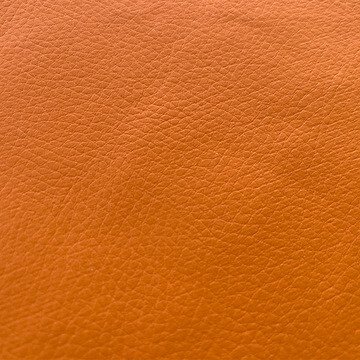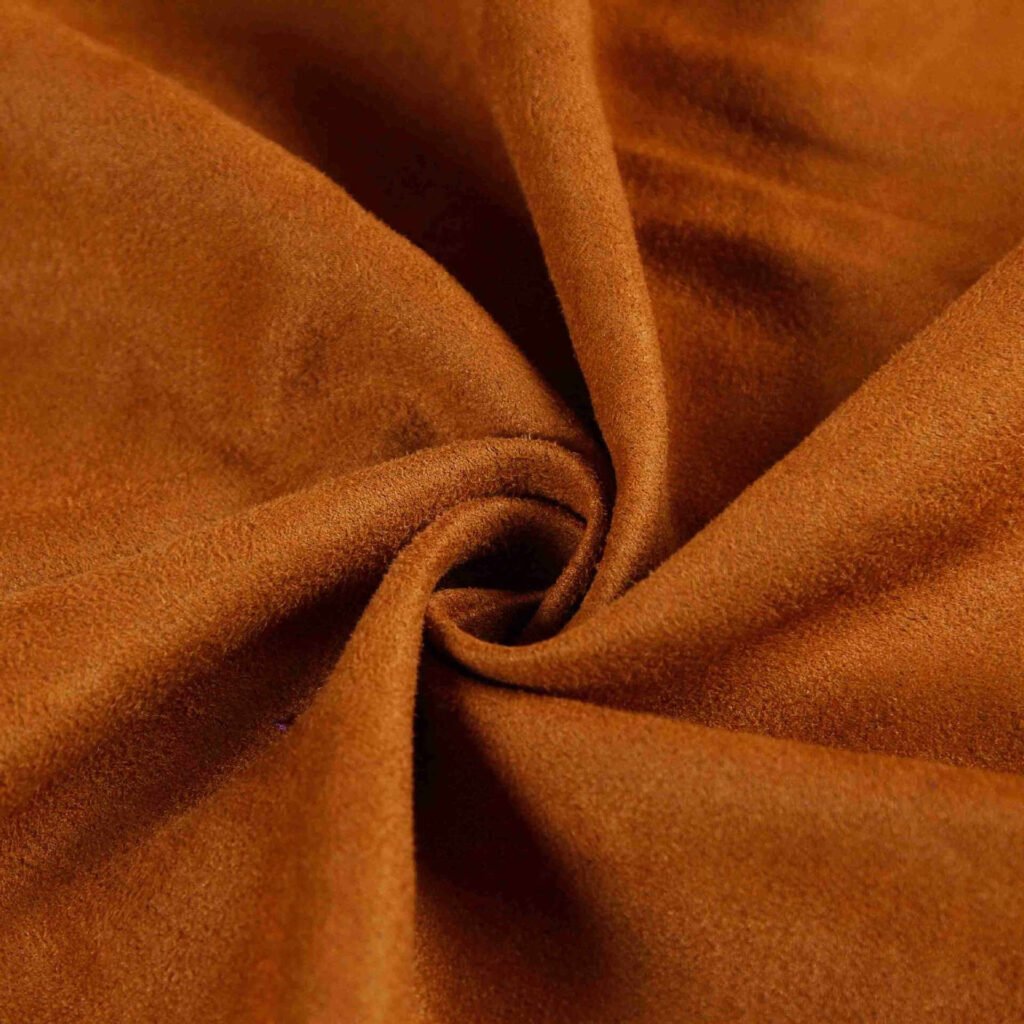Origins of Suede Fabric
Suede’s history dates back to ancient times, with early uses tracing back to animal hides being softened through traditional processes. The name “suede” itself comes from the French term gants de Suède, meaning “gloves from Sweden,” as Sweden was historically known for producing high-quality, soft leather gloves.
Originally, suede was created from the inner side of animal hides, often lamb, goat, or calf, to achieve a soft, velvety texture. Over the centuries, this technique was refined, and suede became a popular material for clothing and accessories, particularly for garments that required a supple, flexible material, such as gloves, jackets, and shoes.
The evolution of suede continued as manufacturing techniques improved, leading to modern-day uses in fashion and home decor, where it remains a symbol of sophistication and luxury.
What is Suede Fabric?
Suede Fabric is a type of leather that has been specifically processed to create a soft, velvety texture. Unlike traditional leather, which uses the outer surface of the hide, suede is made from the inner side, giving it a more delicate and smooth finish. This unique treatment involves buffing or sanding the surface to create the soft, matte appearance that distinguishes it from other types of leather.
Suede Fabric can be made from various animal hides, but the most common sources are lamb, goat, and calf, which are chosen for their fine texture and supple nature. The resulting fabric is lightweight and flexible, with a natural, rich texture that enhances both its aesthetic appeal and tactile quality.
The defining characteristic of suede is its soft, brushed finish, which gives it a distinctive, luxurious feel. It is often recognized by its slight nap, or the direction in which the fibers lie, which can vary in appearance depending on how the suede is treated.
Characteristics of Suede Fabrics
Suede fabrics have several key properties that make them both luxurious and practical:
- Texture and Feel
Suede has a soft, velvety texture that feels luxurious to the touch. The brushed finish makes it comfortable for clothing and accessories, adding a tactile appeal. - Durability
Suede is durable, withstanding regular wear and tear. However, it is more prone to scratches and stains compared to other leather types, so it needs careful handling. - Breathability
Suede is breathable, allowing air to circulate and making it a comfortable choice for clothing, especially in warmer weather. - Appearance
Suede has a unique matte finish that gives it a sophisticated look. The fabric reflects light subtly, creating a dynamic, changing appearance depending on the angle. - Elasticity
Suede is flexible but not highly elastic. It conforms to shapes over time but doesn’t stretch significantly, making it less forgiving than some other fabrics. - Color and Dyeing
Suede absorbs dye well, allowing for rich and vibrant colors. It can be dyed in a wide range of shades, making it versatile for various designs. - Care and Maintenance
Suede requires special care to avoid damage from water or stains. Regular brushing and careful storage help maintain its appearance.
Types of Suede Fabrics
Suede comes in different types, each with its own distinct characteristics. Understanding these variations can help in choosing the right suede for a particular application.

Full-Grain Suede
Full-grain suede is made from the outer layer of the animal hide, preserving its natural texture and strength. It is typically thicker, more durable, and more expensive than other types of suede. This type of suede has a rich, deep color and is often used in premium products like luxury shoes and high-end bags.

Split Suede
Split suede is made from the inner layers of the hide, which are separated during the tanning process. It is softer and more flexible than full-grain suede but may not be as durable. Split suede is commonly used in fashion items such as jackets and accessories.

Nubuck Suede
Nubuck is a type of suede that has been sanded or buffed on the outside, giving it a finer, velvety texture. While it shares many similarities with traditional suede, nubuck is often smoother and more luxurious, often found in high-end shoes, furniture, and clothing.

Pigmented Suede
Pigmented suede refers to suede that has been treated with a layer of pigment or paint to achieve a uniform color. This treatment can help make the suede more resistant to stains and fading, though it may slightly alter the texture.

Synthetic Suede
Synthetic suede is made from man-made materials designed to mimic the appearance and feel of natural suede. It is an animal-friendly alternative and tends to be more affordable, but it may not have the same breathability or durability as real suede.
Production Process of Suede Fabrics
The production of suede is a meticulous process that transforms raw animal hides into the soft, luxurious fabric we know and love. This process involves several key stages, each of which is crucial to achieving the signature texture and quality of suede.
| Step | Description |
|---|---|
| Selecting the Hides | High-quality animal hides, typically from lamb, goat, or calf, are selected for their fine texture, softness, and flexibility. These hides are the base for creating quality suede. |
| Tanning | The selected hides undergo a tanning process to preserve them and prevent decomposition. This involves treating the hides with chemicals, such as chromium salts or vegetable tannins, to strengthen the material. |
| Buffing or Sanding | After tanning, the hides are carefully buffed or sanded on the inner surface to create the signature soft, velvety texture of suede. The sanding depth impacts the softness and finish of the fabric. |
| Dyeing | Suede is dyed using various methods, such as immersion or spray dyeing. The porous surface of suede absorbs dye deeply, resulting in rich and lasting colors. |
| Finishing | The finishing step enhances the texture and appearance of suede. This can include additional sanding for a smoother feel and applying protective treatments to increase resistance to stains and moisture. |
The production of suede is a careful, multi-step process that combines both traditional craftsmanship and modern techniques. Each stage is designed to preserve the material’s soft texture while enhancing its durability and appearance, making it suitable for a wide range of products, from fashion items to home decor.
Uses of Suede Fabrics
Suede’s versatility allows it to be used in a wide range of applications, from fashion to home décor. Below are some of the most common uses of suede fabrics:
- Fashion and Apparel
Suede is a popular material in the fashion industry, known for its luxurious feel and timeless appeal. It is often used to make jackets, skirts, dresses, and pants. Suede is also commonly used for accessories such as handbags, wallets, and shoes, where its soft texture and rich appearance enhance the overall design. - Footwear
Suede is particularly popular in the footwear industry, where its supple texture and breathability make it ideal for shoes, boots, and sandals. It is often used in high-end shoes and casual footwear due to its soft feel and sophisticated look. - Upholstery and Furniture
Suede is also used in home décor, especially for furniture upholstery. Sofas, chairs, and cushions made from suede have a luxurious appearance and feel. Its soft texture adds comfort, making it a desirable option for interior design. - Accessories
Suede is a common choice for accessories like belts, gloves, and hats. It offers both elegance and practicality, providing comfort and durability for everyday use. - Car Interiors
In high-end car interiors, suede is used for seat covers, steering wheel covers, and other elements. Its luxurious look and soft texture add a premium feel to the vehicle’s interior.
Care of Suede Fabrics
Suede requires special care to maintain its soft texture and luxurious appearance. Proper maintenance can extend its lifespan and keep it looking its best.
- Cleaning
- Use a suede brush to remove dirt and restore the nap (the soft, raised texture). Brush gently in one direction to avoid damaging the fabric.
- For stains, use a suede eraser or a clean cloth dampened with white vinegar to blot the affected area. Avoid soaking the material, as suede is sensitive to water.
- Protection
- Apply a water-repellent spray specifically designed for suede to protect it from moisture and stains. Reapply periodically to maintain protection.
- Keep suede items away from prolonged exposure to direct sunlight, which can cause fading and dryness.
- Storage
- Store suede garments and accessories in a cool, dry place to prevent moisture damage. Use breathable fabric bags instead of plastic covers to allow airflow.
- Stuff suede shoes and bags with tissue paper to help them retain their shape.
By following these simple care tips, suede fabrics can maintain their signature softness and elegance for years. Proper maintenance ensures they remain a timeless addition to wardrobes and interiors alike.
Future in Suede Fabrics
Suede fabrics are evolving with sustainability and innovation. Eco-friendly alternatives like plant-based and recycled suede are becoming popular. Enhanced durability treatments make suede more practical, while bold colors, patterns, and metallic finishes attract modern consumers. Advances in smart fabric technology and expanded applications in tech accessories highlight suede’s adaptability. These trends ensure suede remains relevant in fashion and beyond.
Conclusion
Suede fabrics embody a unique blend of softness, sophistication, and versatility, making them a timeless material cherished across industries. From classic apparel and footwear to contemporary furniture and car interiors, suede’s luxurious texture and rich appearance continue to captivate designers and consumers alike.
While its delicate nature requires attentive care, the effort is well-rewarded by the fabric’s enduring elegance and functionality. Whether in fashion or home décor, suede remains a symbol of refined taste, bridging the gap between traditional craftsmanship and modern style. Its journey from humble animal hides to a luxurious finished product highlights the art and precision behind its creation, ensuring its relevance for generations to come.






